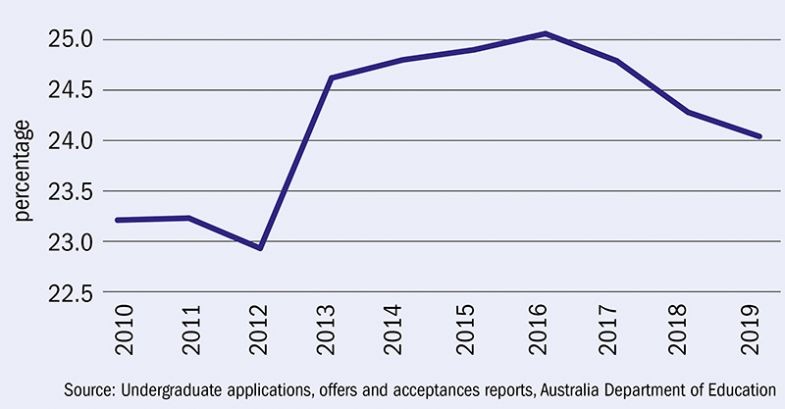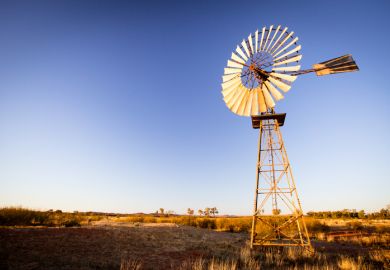Rural Australians’ share of university places has declined over the past decade, despite it being the federal government’s main policy objective in higher education, with the drop intensifying after ministers axed the demand-driven admissions system.
Regional Australia’s share of higher education students has fallen steadily, with the biggest drop occurring last year, according to student data covering the decade until 2018. Students also declined as a proportion of the regional population.
Figures from this year tell a similar story. Offers of university places fell more steeply for non-metropolitan students than their city counterparts, even though applications had increased from regional areas and declined from metropolitan Australia.
Offers to non-metropolitan students surged after the removal of student number controls in 2012, with their share of the national total rising from about 23 per cent between 2010 and 2012 to 25 per cent over the next five years. It receded to about 24 per cent in 2018 and 2019, with the offer rate slumping to its equal lowest level in eight years.
Regional students’ share of national offers of university places

Policy analyst Andrew Norton said that domestic higher education enrolments were falling throughout Australia, in a trend more likely to be driven by weak demand than funding rules. But regional universities had warned that the capping of university places would hit them disproportionately because they are particularly reliant on government teaching grants and many people in their catchment areas have no tertiary qualifications.
Mr Norton said that there were not enough data to definitively explain declining regional participation rates. He said that demographics may be playing a role, with a decline in regional youth population reducing the number of locals of the “main university-attending ages”.
He said that the fall in participation was concentrated among mature-aged Australians – many of whom go to regional universities – and particularly among people who had unsuccessfully attempted degrees in the past. The demand-driven system could have enabled more people to obtain places on their preferred courses “first time around”, with the number of “repeat customers” falling as a result. But this was just a “hunch”, he stressed.
Caroline Perkins, executive director of the Regional Universities Network, said that the capping of places had adversely affected some regional universities. But others had been awarded extra places through one-off funding boosts.
“It’s a very mixed picture,” she said, noting that offers from RUN member universities – unlike other university groups – had increased.
Dr Perkins said that a severe drought in eastern Australia could also be affecting participation. “Lots of places in the bush are finding it pretty tough,” she said. “In some areas that is affecting the interest or even the ability of people to go to university.”
The government has unveiled new measures to boost regional enrolments, with Perth and the Gold Coast added to the list of “regional” areas where international graduates qualify for an extra year’s work rights. For students outside cities and major regional centres, this is being increased to two years.
Dan Tehan, the education minister, has also revealed the places where A$15,000 (£8,000) “Destination Australia” scholarships would be available next year. The list comprises 65 regional campuses of 35 institutions, including 22 universities.
Register to continue
Why register?
- Registration is free and only takes a moment
- Once registered, you can read 3 articles a month
- Sign up for our newsletter
Subscribe
Or subscribe for unlimited access to:
- Unlimited access to news, views, insights & reviews
- Digital editions
- Digital access to THE’s university and college rankings analysis
Already registered or a current subscriber?








